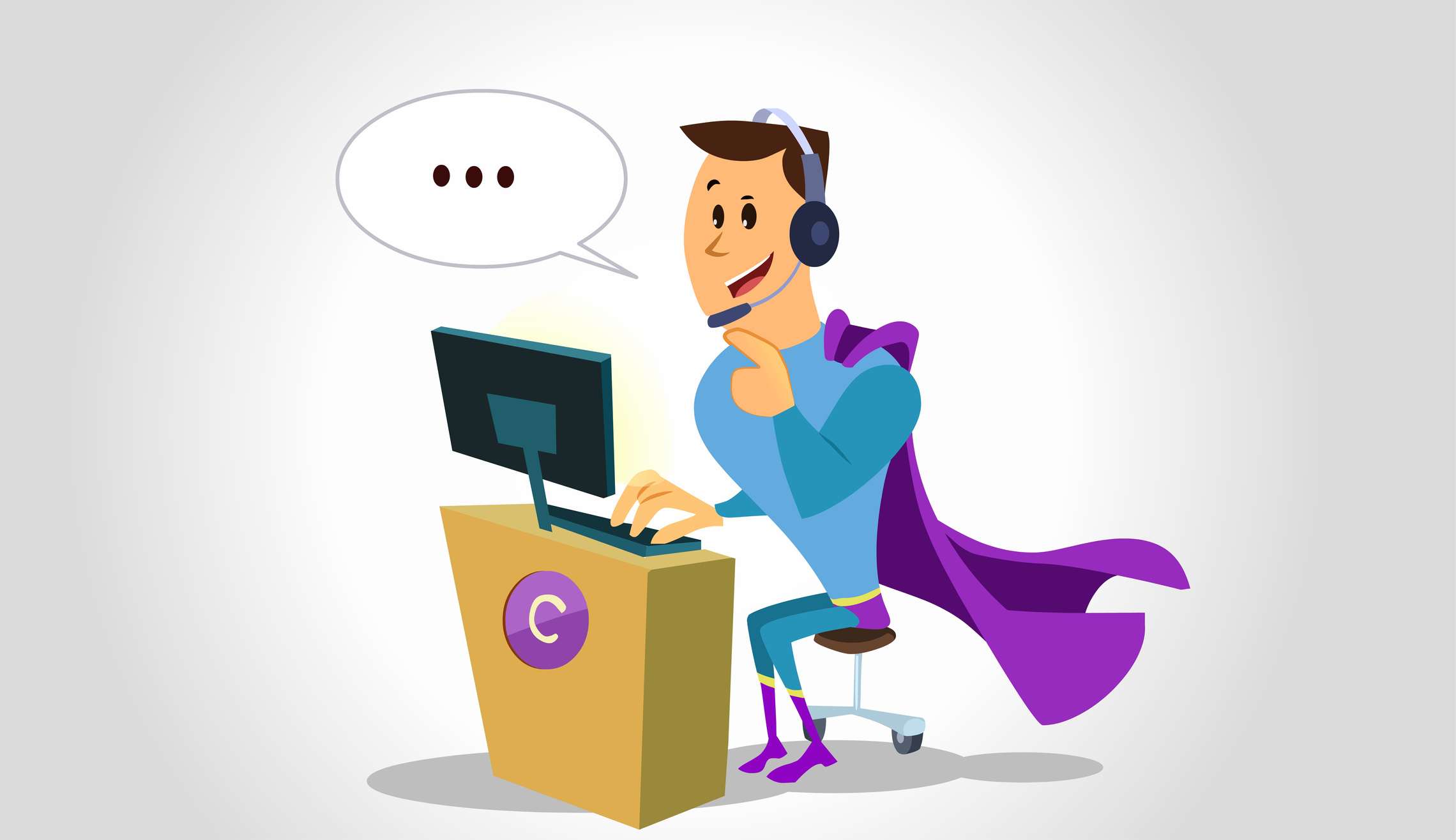The business world is evolving at an unprecedented rate. Maintaining a competitive advantage in times of rapid change and transformation requires companies to stay razor-focused on their core competencies and the ability to innovate and flex with market demands.
Capacity challenges are one of the side effects of innovation and growth. It is at this critical junction that most companies face the question of whether or not to outsource their customer service and call center functions, where and with whom. The right outsourcing partner can help to relieve growing pains while ensuring that customer service quality does not waver.
What Is Call Center Outsourcing?
Business process outsourcing (BPO) is the umbrella term for contracting with another company to perform specific tasks or responsibilities, which can be either front-office or back-office functions. As a customer-facing function, call center outsourcing falls within BPO’s front-office category, while back-office refers to those functions that are non-customer-facing.
At the most basic level, an outsourced call center is a third-party vendor that is hired to manage customer service and call center operations. Outsourced call centers can be located:
- Offshore - when the call center operation is in far distant countries and regions like the Philippines or Eastern Europe.
- Nearshore - when the call center is located closer than offshore, such as Mexico, Central America and the Caribbean.
- Onshore - aka domestic outsourcing, when a third-party call center site is located within the United States.
6 Top Benefits of Call Center Outsourcing
Outsourcing intelligently, and with the right vendor(s), could be a winning strategy for your company. The following are among the top benefits that come with outsourcing vs. in-house:
- Cost Savings. Call centers are labor-intensive operations. The continuous cycle of recruiting, hiring and training can consume 50% to 80% of an operation’s costs, not to mention infrastructure and facilities costs.
- Increased Efficiency. Outsourcing enables you to focus on developing your brand’s strengths and core competencies.
- Scalability and Staffing Flexibility. Outsourcers can staff to match fluctuating contact volume, whether that includes extended hours, 24/7 coverage, seasonal spikes or overflow.
- A Broad Range of Skills and Expertise. Outsourcers serve multiple industry verticals with access to a broader talent pool that clients can tap into without having to hire or train in-house staff in specific disciplines.
- Nearshore and Offshore. Elite vendors with a global presence provide lower-cost outsourcing options, without sacrificing quality and customer experience.
- Service Quality. Tier 1 vendors put considerable time, effort and expense into continuously improving and refining their customer experience, QA, technology, tools and practices.
What to Expect from the Right Call Center Outsourcing Vendor
Choosing to outsource your call center needs to a third-party vendor is a process that requires careful due diligence and planning. The risks are high and incorrect vendor selection will increase your chances of failure.
While there is no one-size-fits-all solution, realistically, there are a few standards that you should expect from your call center vendor partner:
- Deliver on Promises and Contractual Commitments. Too many call center BPO firms oversell clients and then stumble. The right vendor should not overpromise and underdeliver. Hold your vendor accountable to everything that was promised to you.
- Onboarding and PMP. Your vendor’s project management team and process must be best-in-class. Outsourcing relationships often struggle when they are not set up correctly from the start.
- Clear Communications. The vendor must communicate transparently and clearly understand your company’s goals, expectations, culture and challenges.
- Proactive and Nimble. Expect your vendor to be flexible and proactive while maintaining the integrity of their processes.
- People Centric. Vendors that underperform often also have exceedingly high agent turnover. Vendors who delight clients are often the ones reinvesting in their people, agent retention, sites and culture.
- No Language Barriers (if Nearshore/Offshore). The vendor’s client services and operations teams must have strong English skills and a clear understanding of communication protocols and cadence. Agents assigned to your account must also have the right English aptitude and skills to best serve your customers.
- Performance and Metrics Reporting. Tier 2 and Tier 3 vendors with lower standards often struggle to “explain the numbers” to you. A Tier 1 vendor will provide intelligent and actionable data beyond the reporting of KPIs. Reports are useless unless the vendor provides tactical and strategic insights and, if necessary, recommendations on pivots and improvement methods.
- Branding. Your outsourcing partner should understand your brand and represent it by delivering an employee and customer experience that is aligned with your mission and values.
- Quality and Compliance. The vendor’s quality and compliance programs must ensure that call quality scores meet and exceed your expectations. Training, coaching and employee development processes are top-notch. And all compliance standards that you require are adhered to without fail.
- Data and Site Security. Tier 1 outsourcers invest heavily in site and data security, business continuity plans, backup systems and compliance such as SOC II, ISO, PCI and beyond. Your outsourcer should never cut corners, opening themselves up to data and other breaches.
If a call center outsourcer’s services do not reflect the list above, then keep looking for a provider that is better suited to your company’s needs.
The Key Stages of a Call Center Outsourcing Initiative
Once the decision has been made to outsource, a journey begins through the following critical stages. Please note that this process normally takes at least 3-6 months to complete. It can be fast-tracked depending on the length of training and the technology integration:
- Shortlist Prospective Vendors. After you have identified and interviewed potential vendors, the field is narrowed by shortlisting the most qualified candidates for further due diligence. Please note: Internet searches alone are not always the best way to find your ideal vendor partner.
- Proposal Stage. Shortlisted vendors should be asked to submit a proposal. An elaborate RFP is unnecessary for smaller engagements. A short questionnaire or a curated request for proposal (RFP) can be used instead. Do not send a blind RFP to multiple vendors that you have not yet prequalified, unless you’re looking to waste your time and theirs.
- Site Visits. Site visits are essential for a fair and robust due diligence process. Onsite assessments are the best way to understand a vendor’s culture, methodologies and services.
- Vendor Selection. At this stage, it’s time to choose the vendor(s) that best aligns with your culture and business requirements. With detailed and objective information from the proposals, along with a firsthand view of your top vendors’ operations, your project team will then evaluate and rank the vendors against your business requirements and other decision criteria.
- Contracting. During the contracting and negotiation stage, your team will finalize your MSA (Master Services Agreement) and SOW (Statement of Work) with your selected vendor(s). Be sure to include a communication plan that lays out a cure period for issues, reporting cadence, and a plan for conducting regular operations audits.
- Onboarding. Vendor onboarding is the process of starting the partnership on the right foot by exchanging documents and data with your vendor to set them up for success. Lapses in the onboarding process or a misunderstanding of expectations will lead to costly errors, compliance risks and other issues.
- Training. Tier 1 vendors can build a training curriculum from scratch or enhance your existing one. Your trainers may also conduct a “train the trainer” session with your vendor. It is also helpful to allow the vendor’s staff to travel to your location (office or in-house call center) for cultural immersion and product knowledge training.
- Launch. It is time to transition your customer service and call center operations to your vendor partner. Tracking and reporting on KPIs is critical before, during and post-launch to quickly identify and address service gaps and any unanticipated issues.
- Vendor Management. Once you have transitioned your operation to the vendor, your team’s involvement is not over. Successful outsourcing partnerships require bilateral and collaborative management between you and the vendor to ensure that the relationship flourishes for both parties.
- Value Adds and Scaling. The right vendor can adapt to your company’s immediate and evolving needs in terms of customer contact channels, value-added tools, automation, growth and scalability.
Embrace Growth and Change by Investing in the Right Partnership
Outsourcing to a vendor, is one of the best ways to leverage third party call center and customer experience expertise, provided you select the right vendor partner(s).
Omni-channel expertise and investments in AI, RPA, chatbots, business intelligence and other technologies enable call center and BPO providers to offer a broader spectrum of services to clients. Elite and Tier 1 vendors provide much more than just “people in seats.” They are integral to the client’s customer experience value chain.
What was once viewed primarily as a cost-cutting tactic has evolved into a significant advantage that allows companies to leverage the skills, innovation, technology and world-class practices that would take years to develop in-house. But keep in mind, the best way to prepare for and embrace growth is to invest in the right strategic partnerships to help scale your business.







